To learn how to calculate what size generator you need, the primary task is to determine your house’s power consumption. Start by noting down the running wattage of the appliances, adding them up, analyzing site conditions, and selecting one from the generator sizes available. Also, determine which scenarios you’ll use the generators at home, recreational, or work.
It’s also crucial to check the different types of generators available, i.e., standby, portable, diesel, gas, and solar. Solar generators are an ideal choice due to their use of clean energy and efficiency. Jackery Solar Generators are known for their portability, safety, and ability to supply continuous power during emergencies and outdoor adventures.
AI Takeaways
- When it comes to a generator size, getting a proper size matters. An undersized generator won’t be able to handle your power needs, and an oversized generator will result in a waste of money.
- To calculate the generator size, estimate your power consumption, convert kW to kVA, analyze site conditions, and select from the available generator sizes.
- Generators based on usability and fuel type are classified as standby, portable, gas, diesel, and solar generators.
- Generators find its usage in various scenarios, such as home, recreational, and work.
- What a generator can power.
Why Proper Generator Sizing Matters
When choosing a generator, the size is essential. When talking about generator sizing, the concern is more about wattage than the physical dimension. And getting an oversized or undersized generator has its disadvantages. Here’s what:
- Insufficient Power: An undersized generator lacks the required power and can struggle to meet the load's demands. This, in turn, leads to insufficiency or poor performance.
- Damage Your Appliances: Your undersized generator might overwork to meet your power demands. An overworking generator can overheat, malfunction, and cause damage to your appliances. It also potentially damages itself in this process.

- Oversized Generator Mean Wasted Money: Depending on the output, brand, fuel type, and installer, a generator can be expensive. So, if it produces more power than needed, you incur more operating costs. For example, if you have a gasoline or a liquid propane generator, you’ll pay more to fill the fuel tank and, in turn, more maintenance fees for the bigger unit.
How to Calculate What Size Generator I Need
In order to calculate the generator size you need, make a list of all appliances you want to power, find their running watts and highest starting watts, then sum the running watts and add the single highest starting wattage to that sum. You can also add a 20-25% safety margin (or multiply by 1.25) to account for fluctuations and future needs.
As you understand the importance of proper generator sizing, it’s time to answer one of the most common questions: “How to calculate what size of generator I need.” For that, follow the step-by-step process:
Understand the Basics
Before you get into calculating the size of a generator, let’s start by understanding a few terms you might come across:
- Generator Wattage: It’s the amount of electric power a generator can produce, measured in watts (W). In other words, the value represents the generator’s capacity to power electrical appliances or devices.
- Amps: Amps or Ampere is the amount of electric current passing through a circuit per unit of time.
- Volts: Volts denote the electric potential difference between two points in a circuit. Higher voltage means more current passes through an electric circuit, provided the resistance remains constant.
- Running Watts: It refers to the amount of power appliances need to keep running.
- Starting Wattage: It’s the extra power the appliances (especially motor-driven ones) require for the first few seconds to power up.
- Surge Wattage: Also known as peak wattage, it’s the highest power a generator must provide when the appliance wants to start up.
Understand the Generator Size
The most important thing here is to calculate your electrical needs and how many and what type of electrical appliances you want to power simultaneously. List the essential devices and their respective wattage information (running and starting). You’ll find the running wattage information of individual appliances in the instruction manual, then calculating its starting wattage. Then, invest in the right size of generator that aligns well with your calculated power needs.
How to Estimate Your Power Consumption
Now it’s time to determine your power consumption, but first, start by noting down the starting and running wattage of the appliances. Here’s the table for some of the common appliances and their respective wattage values:
- Recreational Use (Camping/Tailgating)
|
Tools/Appliances |
Running Watts |
Starting Watts |
|
AM/FM Radio |
100 |
0 |
|
Electric Grill |
1600 |
0 |
|
Box Fan |
200 |
0 |
|
Cell Phone |
40 |
0 |
|
Outdoor Light String |
250 |
0 |
|
Inflator Pump |
50 |
150 |
- Household
|
Tools/Appliances |
Running Watts |
Starting Watts |
|
Essentials |
||
|
Light Bulb (75W) |
75 |
0 |
|
Refrigerator |
700 |
2200 |
|
Electric Water Heater |
4000 |
0 |
|
Sump Pump- 1/3HP |
800 |
1300 |
|
Water Well Pump – 1/3 HP |
1000 |
2200 |
|
Heating/Cooling |
||
|
Humidifier- 13 Gal |
175 |
0 |
|
Space Heater |
1800 |
0 |
|
Furnace Fan Blower – 1/2 HP |
800 |
2350 |
|
Window AC |
500-1500 |
1500-4500 |
|
Central AC |
1500-6000 |
3000-6700 |
|
Heat Pump |
4500 |
9000 |
|
Kitchen |
||
|
Microwave Oven |
625-1000 |
0 |
|
Coffee Maker |
1000 |
0 |
|
Dishwasher – Hot Dry |
1500 |
2000 |
|
Electric Stove – 8" Element |
1500 |
1500 |
|
Toaster |
850 |
0 |
|
Laundry Room |
||
|
Washing Machine |
1150 |
2250 |
|
Iron |
1200 |
0 |
|
Clothes Dryer – Gas |
700 |
1800 |
|
Clothes Dryer – Electric |
4500 |
6000 |
|
Family Room |
||
|
Stereo Receiver |
450 |
0 |
|
VCR |
100 |
0 |
|
Other |
||
|
Garage Door Opener – 1/2 HP |
875 |
2350 |
|
Security System |
500 |
0 |
|
Hair Dryer – 1250 Watt |
1250 |
0 |
|
Curling Iron |
1500 |
0 |
- DIY/Jobsite
|
Tools/Appliances |
Running Watts |
Starting Watts |
|
Quartz Halogen Work Light 300-1000 |
300-1000 |
0 |
|
Reciprocating Saw |
960 |
960 |
|
Airless Sprayer – 1/3 HP |
600 |
1200 |
|
Electric Drill (½”-⅜”) |
440-600 |
600-900 |
|
Hammer Drill |
1000 |
3000 |
|
Miter Saw |
1800 |
1800 |
|
Circular Saw |
1400 |
2300 |
|
Planer/Jointer |
1800 |
1800 |
|
Belt Sander |
1200 |
2400 |
|
Air Compressor |
970-1600 |
1600-4500 |
How to Calculate the Power Needs?
Note down the appliances you want to power, and proceed with calculating the generator size. Here’s the formula for that:
Total Running Watts = Sum of Running Watts of Individual Appliances
Let’s consider you’re powering a space heater (1800W), a refrigerator (700W), a coffee maker (1000W), and a security system (500W) simultaneously. So the calculation goes as follows:
Total Running Watts= 1800W + 700W + 1000W + 500W = 4000W
Besides, the motor-driven appliances experience a surge in wattage for a few seconds, and the generator must be capable of that. To calculate the surge wattage, use the formula:
Total surge wattage = Running wattage of the appliances + Single highest starting watts out of the items you want to use
Amongst the appliances, the refrigerator has the highest starting watts, so:
Total surge wattage = 4000W + 2200W = 6200W
Considering that’s the power needed from a generator, you’ll need a generator with a minimum rated output of 4000W and surge output of 6200W. It’s essential to keep a 10-20% buffer if you plan to add appliances in the future. A 5000W generator should thereby be a safe bet.

Note: If you invest in an appliance not on the list, check the instructions manual for its running wattage. Many manufacturers instead mention the power requirements in volts and amps, so use the formula: Running watts = Volts (V) × Amps (A). For instance, a coffee maker operates at 120V and 8 Amps, so its wattage = 120 × 8 = 960W.
How to Calculate the Size of A Generator?
As you’ve determined your overall power needs, follow the steps to determine the generator’s size:
Step 1: Calculate the Load Size
Load size is simply the overall power requirement of your house. From the calculations made above, let’s assume the load size to be around 4000W or 4kW.
Step 2: Convert kW to kVA
Generators are rated in kilo-volt-amperes (kVA), which measures the total power in use in a system. In a 100% efficient system, kW = kVA. However, none of the electrical appliances are 100% efficient, and their apparent power won’t produce a useful work output. In other words, a 4000W generator might not be able to fulfill your 4000W power requirements.
To convert between kW and kVA, determine the efficiency of the electrical system, which is a power factor between 0 and 1. The closer the value is to 1, the more efficiently kVA is converted into useful kW.
Most standard generators have a power factor of 0.8. To convert kVA to kW, you must multiply by using a power factor to determine the output capacity. A generator with a 100kVA rating and 0.8 power factor can’t power an appliance that needs 100kW of actual power.
Here’s the formula for kVA to kW:
kW = kVA × 0.8 , 100kVA × 0.8 = 80kW.
For kW to kVA:
kVA = kW ÷ 0.8 = 100kW ÷ 0.8 = 125kVA
So, if you need to power 100kW equipment, you need a generator with a minimum output rating of 125kVA.
Step 3: Define Your Running Requirements
Next, it’s crucial to determine if you plan to use the generator as a primary power source or a standard measure.
It’s recommended not to operate the generator at its maximum capacity for more than 30 minutes. Operating it much longer can cause issues like overheating, engine wear and tear, component damage, and even frying.
If you plan to use it as a whole-home generator, try to size it for 70-80% capacity. Other than maintaining its optimal performance for long periods, leaving a 20-30% safety margin allows for adding other appliances in the future.
For example, if your house’s overall power consumption is around 80kW, consider a generator with an output of 100kW or more.
Step 4: Analyze Site Conditions
Once you’ve calculated your load size and running requirements, you have an idea of the output you need from a generator. The next step is to confirm that your power requirements are feasible for the location and conditions of the site.
Maneuverability and site access determine the size of a generator. If the entry site is narrow, off-road, or uphill, positioning a big generator would be a challenging task. You might need a crane to operate and position the generator, so make your decisions accordingly.
What are the Common Sizes of Generators?
Now you’ve figured out the ideal generator size for your setup, select from the typical generator sizes available:
- Personal and home use: 5-50kW
- Backup Generator: 1-10kW and more if you have more appliances to run.
- Small homes or apartments: 5kW-10kW depending on the appliances to run at once
- Large homes: 20kW-30kW
- Industrial: 50kW-3MW for industrial applications
What is a Generator Used & Its Types?
Generators find their usage in plenty of scenarios, whether to power limited household appliances during outages, emergencies, or camping. Here are the scenarios where generators are useful:
- Hospitals: Generators can serve as a critical backup to medical centers and hospitals during emergencies. With these, one can keep machinery like CPAP, ventilation, heart monitors, and others working and keep refrigerated medicines and food fresh.
- Construction Sites: Generators can help power specific tools and appliances for construction workers in an area without electricity access.
- Homes: Whether you want to cut off your dependence on electric grids, save on electric bills, or have backup power during emergencies, generators are a reliable companion.
- Campsites: If you plan to camp or live off-grid in a distant location without access to a traditional grid, portable generators come in handy. These can light up your campsite, power up your RVs, and let you charge your devices.
- Events: Generators pack enough power to power heating devices, cooling equipment, audio-visual units, or cookware to ensure power outages don’t hamper the overall experience.
Now, depending on the usability and fuel source, generators are classified into multiple types, which are as follows:
- Standby Generator: These large, stationary units pack enough power for an entire house or a manufacturing plant in case of an emergency. However, due to their large size, they come at a higher price tag.
- Portable Generator: Portable generators typically have a small capacity and are ideal for short trips, powering household appliances during outages, or powering a tool. While portability makes it affordable and transportable, these can’t power an entire house.
- Inverter Generator: These use clean and stable energy to power sensitive appliances like laptops, mobiles, etc. Inverter generators tend to be more fuel-efficient, quieter, and safer.
- Diesel Generator: Powered by diesel, these are known for their durability, efficiency, and reliability. They pack enough power to let you go off the grid or power an outdoor event.
- Solar Generator: As the name suggests, the solar panels in these generators convert sunlight into DC electricity, which is converted to AC with the help of a power station. They are portable, use clean fuel, and save money in the long term. Jackery Solar Generators are one of the best, offering reliability, portability, efficiency, and safety.
What a Generator Can Power in Home, RV, or Work?
When picking a generator, you must consider exactly which appliances you want to run when the power goes out or when you’re camping. Following are the different generator-usage scenarios and appliances it can power:
For Home Use
Generators come in handy whether you want to reduce your dependence on electric grids or power the appliances during an extended power outage or blackout. Jackery Solar Generators are one of the best out there and can support most use cases. Determine what size generator is needed to run a house based on your overall power needs and make your decisions accordingly. Regardless, the following household appliances you can power with a generator:
- Refrigerator
- Microwave
- Dishwasher
-
Coffee Maker
- Central AC
- Window AC
- Space Heater
- Dryer
- Washing Machine
- Laptop/Computer
- TV
- Ceiling Fan
- LED Light
In Tampa, retiree Richard Hart has turned his home into a storm-ready haven with multiple Jackery products. During Hurricane Milton, his setup kept the fridge, freezer, lights, and even his CPAP running for three days off-grid, so smoothly he barely noticed the outage. See how Richard built his peace of mind in his Jackery Story.
For Recreational
Generators can power almost every appliance for recreational use, such as tailgating or camping. Some of the appliances include:
- Lights
- Smartphones
- Portable Fans or Heaters
- Laptops
- Electrical Skillets
- Electrical Fillet Knives
- Camp Stoves
- Mini Fridges
These typically are portable generators and aren’t capable of powering heavy-duty tools and appliances. Jackery Solar Generators come in various sizes and are versatile options that are portable to carry to your tailgating, camping, or small gatherings and reliable enough to power your household appliances during emergencies.
For Work
Generator sizes, if calculated correctly, can also power most appliances you use in construction zones or for office purposes. These typically are standby generators, powerful enough to meet most of your power requirements at work. Here are a few appliances it can power:
- Power Tools
- Computers, Laptops, and Smartphones
- Dishwashers
- Washing Machines
- Work Equipment
Jackery Solar Generators Explained
Indoors or outdoors, solar generators are reliable charging solutions that deliver continuous electricity to appliances. Whether you want to save on electric bills or experience the comfort of modern appliances in a remote setting, solar generators are a reliable choice.
Jackery is a reputed manufacturer of high-quality portable power stations, solar generators, and foldable solar panels. Jackery Solar Generators combine Jackery SolarSaga Solar Panels and Jackery Explorer Portable Power Stations to collect and convert sun rays into usable electricity and power outdoor appliances.
Jackery Solar Generator HomePower 3600 Plus
The Jackery Solar Generator HomePower 3600 Plus is ideal for anyone looking to keep essential appliances like fridges powered up to 14 days. It can keep multiple coffee makers, microwaves, lights, and appliances running simultaneously for days. With its high capacity and LiFePO4 battery, it provides safe, stable power that is easy to manage. If you live in storm-prone or remote areas, you can rely on this essential home backup solution to maintain comfort, safety, and essential operations anytime.
Appliances Running Time
- Microwave (1000W) = 3.0H
- Portable Air Conditioner (1000W) = 3.0H
- Refrigerator (300W) = 9.5H
- Fan (100W) = 25.0H
- TV (200W) = 13.7H
Who Should Buy This
If your aim is to keep the fridge running even during long-term power outages and ensure your home stays functional, you can consider going ahead with the Jackery Solar Generator HomePower 3600 Plus.

Customer Review
Very easy to set up, solar charge, great support! Going to buy more batteries!
— Mike Palmer.
Jackery Solar Generator HomePower 3000
The Jackery Solar Generator HomePower 3000 is ideal for families or homeowners who need an essential home backup solution during short- or medium-length outages. Even during power outages, your refrigerator stays cold, lights stay on, and phones, laptops, or medical devices remain charged. It is powerful enough to keep essentials, like fridges, running for days. It provides peace of mind, ensuring that life continues smoothly even when the grid goes down.
Appliances Running Time
- Microwave (1000W) = 2.6H
- Portable Air Conditioner (1000W) = 2.6H
- Refrigerator (300W) = 8.1H
- Fan (100W) = 21.4H
- TV (200W) = 11.8H
Who Should Buy This
If you want a compact yet powerful home battery backup solution that can keep essential appliances powered for hours, you can consider this Jackery Solar Generator HomePower 3000.

Customer Review
I love my new Jackery 3000. I hooked my RV up to it and was able to run the A/C to keep cool during the heat. I highly recommend it.
— Kelli Robbins.
Jackery Solar Generator 2000 Plus
Jackery Solar Generator 2000 Plus is a reliable battery backup solution for most scenarios, be it home, recreational, hospital, or basic work-based. Its high power output offers a continuous electricity supply to most of your appliances, such as refrigerators, computers, chainsaws, drills, etc. You can even expand the battery capacity up to 24kWh to run heavy-duty appliances for long hours.
Appliances Running Time
- Microwave (1000W) = 1.6H
- Portable Air Conditioner (1000W) = 1.6H
- Refrigerator (300W) = 5.3H
- Fan (100W) = 14.2H
- TV (200W) = 7.7H
Who Should Buy This
If you want an expandable battery backup solution for extended power outages or RV trips, the Jackery Solar Generator 2000 Plus is an ideal choice.

Customer Review
This generator has been a great addition to my tools and has power to run miter saws, table saw, and paint sprayer, all the while charging batteries for my power tools.
- Redge Hudson.
What to Consider When Choosing A Generator
When choosing a generator, consider your specific power needs, the total wattage required for your devices (including startup surge), the necessary fuel type (like gasoline, propane, or natural gas), the desired portability versus permanence, the noise level, your budget, and essential safety features. While wattage determines the generator size in terms of power, here are the other considerations you must make when choosing a generator:
Wattage: A primary thing to consider when determining the generator size is the required wattage. The smart thing to do is calculate your energy needs and get a generator with 20-30% more capacity. In this way, you don’t need to operate it at full capacity and not risk the generator of any potential damage.
Fuel Type: Generators are classified by the type of fuel they use, including natural gas, diesel, propane, and solar. Each kind has pros and cons, so select one that suits your needs and is well-set.
Noise Level: Generators can make substantial noise, especially those powered by natural gas, diesel, and propane. If you wish to keep it inside your home, then it might pose a problem, but that’s not the case with construction sites and outdoor events. Solar generators are an example of noise-free and efficient appliances, but these cost much more upfront.
Budget: Budget is crucial to consider when choosing a generator. Remember, standby generators with high power output are costlier than the portable alternatives.
Common Questions About How to Calculate What Size Generator I Need
What size solar generator do I need?
The needed size of the solar generator depends on your household power requirements or the number of appliances that can run simultaneously. For example, you’re powering a coffee maker (700W) and a refrigerator (300W) with the Jackery Solar Generator HomePower 3600 Plus. On the product page, scroll down to find the Running Time Calculator and enter the total appliance wattage to get an estimated runtime. In this case, the Jackery Solar Generator HomePower 3600 Plus will run these appliances (1000W) for 3.0 hours.
What size generator do I need for a refrigerator?
The generator size you need for a refrigerator depends on its running and starting watts. For example, to power a 700W refrigerator, you need a generator output higher than that. Its starting wattage is 2200W, so to be safe, opt for a generator with an output of around 3000W.
What size generator do I need for my RV?
The size of a generator you need for the RV depends on its size and energy consumption. For example, small pop-up campers consume around 1,500 watts, while class B vans with one AC unit consume around 2,000-3,600 watts.
Can a generator be too big for a house?
Yes, a generator can be too big for a house. For example, a 2,500 sq ft house consumes between 15,000 and 22,000W, so a 25,000W generator might generate excess electricity.
How big of a generator do I need to run my AC?
The size of the generator for your AC depends on the power it consumes. For example, for a 3-ton AC, you will need at least a 14kW generator, while a 17kW generator is suitable for a 4-ton AC.
Final Thoughts
Hopefully, this guide answers “how to calculate what size generator I need.” Carry out your calculations carefully and ensure the selected generators aren’t oversized or undersized. Solar generators are the best choice if you need a portable power source to run your household, work, or recreational purposes. Jackery Solar Generators are one of the reliable options that can power most of your essential heavy-duty appliances for hours.
Regardless of the appliances you want to power, Jackery Solar Generators is an ideal companion for indoor and outdoor options. Let us know where you wish to use these generators and the appliances you want to power. This way, we can help you choose your perfect battery backup solution.

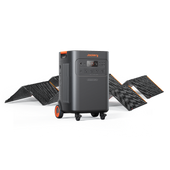











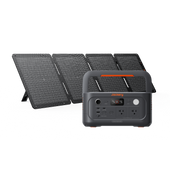



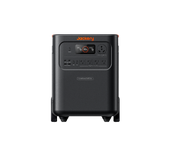
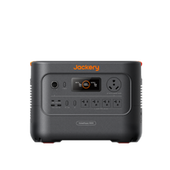





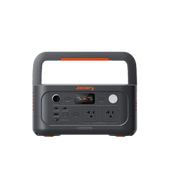





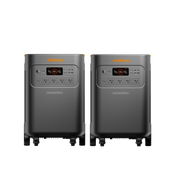
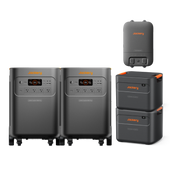





![[Add - on] Jackery Manual Transfer Switch for Explorer 5000 Plus - Jackery](http://www.jackery.com/cdn/shop/files/add-on-jackery-manual-transfer-switch-for-explorer-5000-plus-9017324.png?v=1754016782&width=170)
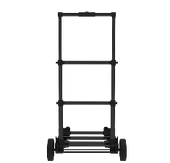
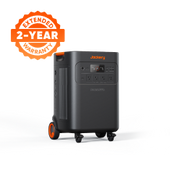
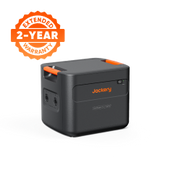
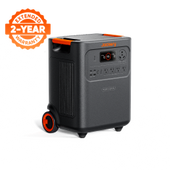
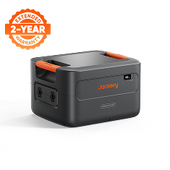
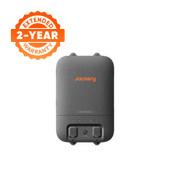



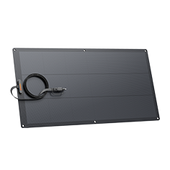
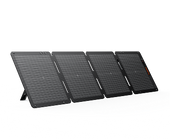




















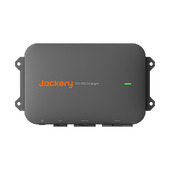




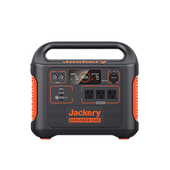






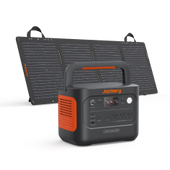
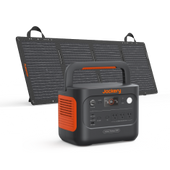






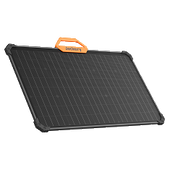


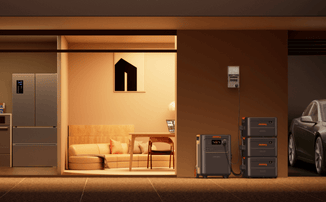














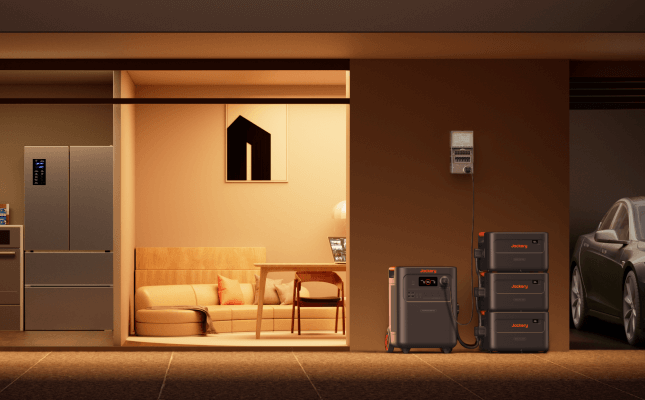


























Leave a comment